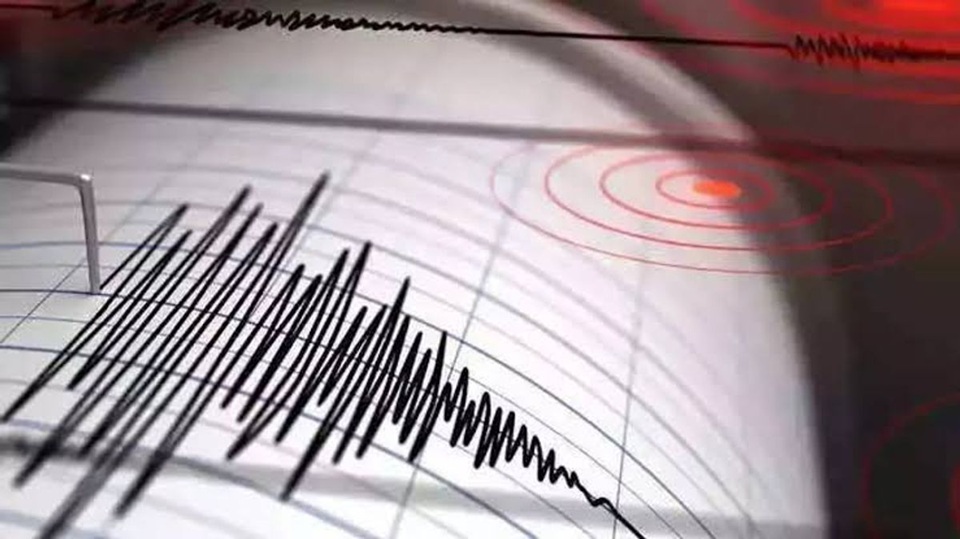A powerful earthquake measuring 6.1 on the Richter scale struck Japan’s northernmost main island, Hokkaido, early Sunday morning, rattling homes and prompting concerns about aftershocks and safety. While there were no immediate reports of major damage or casualties, authorities have urged residents and travelers in the region to remain vigilant.
Earthquake Details: Magnitude, Epicenter, and Depth
According to the Japan Meteorological Agency (JMA), the earthquake hit at approximately 5:30 a.m. local time on June 1, 2025. The tremor originated off the eastern coast of Hokkaido, near the Nemuro Peninsula, with an estimated depth of 60 kilometers beneath the Earth's surface. The United States Geological Survey (USGS) also confirmed the magnitude as 6.1, classifying it as a “strong” earthquake capable of causing moderate to severe damage depending on local building codes and preparedness.
The quake was felt across eastern Hokkaido, including the cities of Nemuro, Kushiro, and Obihiro. Shaking was also reported in Sapporo, the island’s capital, though less intense.
Why Hokkaido Is Prone to Earthquakes
Japan sits atop four major tectonic plates: the Pacific, Philippine Sea, Okhotsk, and Eurasian plates. Hokkaido, in particular, is located near the intersection of the Pacific and Okhotsk plates, making it highly susceptible to seismic activity. Earthquakes in this region often occur due to the subduction of the Pacific Plate beneath the North American Plate, which builds up pressure over time and releases it as seismic energy.
The 6.1-magnitude earthquake on Sunday is a reminder of Japan’s constant vulnerability to natural disasters, especially earthquakes and tsunamis. Although this event did not generate a tsunami warning, past experiences — such as the devastating 2011 Tōhoku earthquake and tsunami — have made both authorities and residents highly responsive to even moderate tremors.
How the Government and Authorities Responded
Immediately after the quake, local municipalities activated emergency protocols. Trains in eastern Hokkaido were temporarily halted to check for track damage, and electricity companies conducted inspections of power grids. The Japan Meteorological Agency did not issue a tsunami warning, easing some initial public concern.
Prime Minister Fumio Kishida’s office confirmed that there were no immediate reports of widespread destruction or injuries. Nevertheless, emergency services remained on standby, and public advisories were issued to ensure people stayed safe in case of aftershocks.
Emergency response units and local police have been surveying the area for landslides, structural damage, and potential gas leaks. So far, disruptions appear minimal, though rural areas are being monitored closely.
Safety Tips for Residents and Tourists in Hokkaido
For anyone currently in Hokkaido or planning to travel there, it's crucial to stay informed and prepared. Here are essential safety tips during and after an earthquake:
Stay calm and drop, cover, and hold on if indoors during a quake.
Avoid elevators, as power outages can trap you inside.
Move away from windows and unsecured furniture that could topple or shatter.
Use a flashlight, not matches or candles, if the power goes out — there may be gas leaks.
Aftershocks are common, so stay in a safe area and listen to local advisories.
Check for injuries and provide first aid if needed.
Turn off gas and water mains if you suspect any damage in your vicinity.
Keep an emergency kit ready, including water, food, flashlight, battery-powered radio, and important documents.
Travel Advisory for Hokkaido: What Tourists Need to Know
Japan remains one of the safest countries in the world to travel to, even with its seismic activity. However, if you're traveling to or currently in Hokkaido, here’s what you should keep in mind:
Flight Status: As of this writing, no major delays or cancellations have been reported at New Chitose Airport, Hokkaido’s main airport. Travelers should still check with their airlines for the latest updates.
Rail and Local Transit: Some train services were temporarily halted but are gradually resuming. JR Hokkaido is conducting safety inspections before full service is restored.
Accommodations: Most hotels are built to stringent earthquake-resistant standards. Contact your accommodation provider to confirm the status of their services.
Trekking and Outdoor Activities: If you had plans to hike or explore the natural parks around Hokkaido, such as Daisetsuzan or Akan Mashu National Park, verify trail conditions and closures with local authorities.
The Japan National Tourism Organization (JNTO) has also advised tourists to download the “Safety Tips” app, which provides real-time earthquake alerts and multilingual guidance for foreign travelers.
Looking Ahead: Preparedness and Resilience
Japan’s advanced infrastructure and regular disaster drills mean that even strong earthquakes like this one are often managed with minimal chaos. However, the risk remains — especially in remote or mountainous areas where infrastructure may be less robust.
Earthquake preparedness is a shared responsibility. Whether you're a resident, a domestic traveler, or an international tourist, staying informed and ready can significantly reduce risk.
Final Thoughts
The 6.1-magnitude earthquake that shook Hokkaido serves as a stark reminder of Japan’s seismic reality. Thankfully, no major casualties or damage have been reported so far, but the event underscores the importance of awareness, planning, and community resilience. For travelers and locals alike, vigilance and preparedness remain the best safeguards in the face of natural uncertainties.
